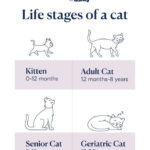While big cats like tigers and lions often steal the spotlight, the feline world is also home to a fascinating array of smaller species, some of which are incredibly tiny. These “Smallest Cats” are not just miniature versions of their larger cousins; they are unique creatures with remarkable adaptations and play crucial roles in their ecosystems. Although they may appear cute and cuddly, it’s vital to remember that these are wild animals facing increasing threats and should never be kept as pets. Let’s delve into the world of the smallest wild cats and explore what makes them so special, focusing on the guiña, flat-headed cat, black-footed cat, and rusty-spotted cat.
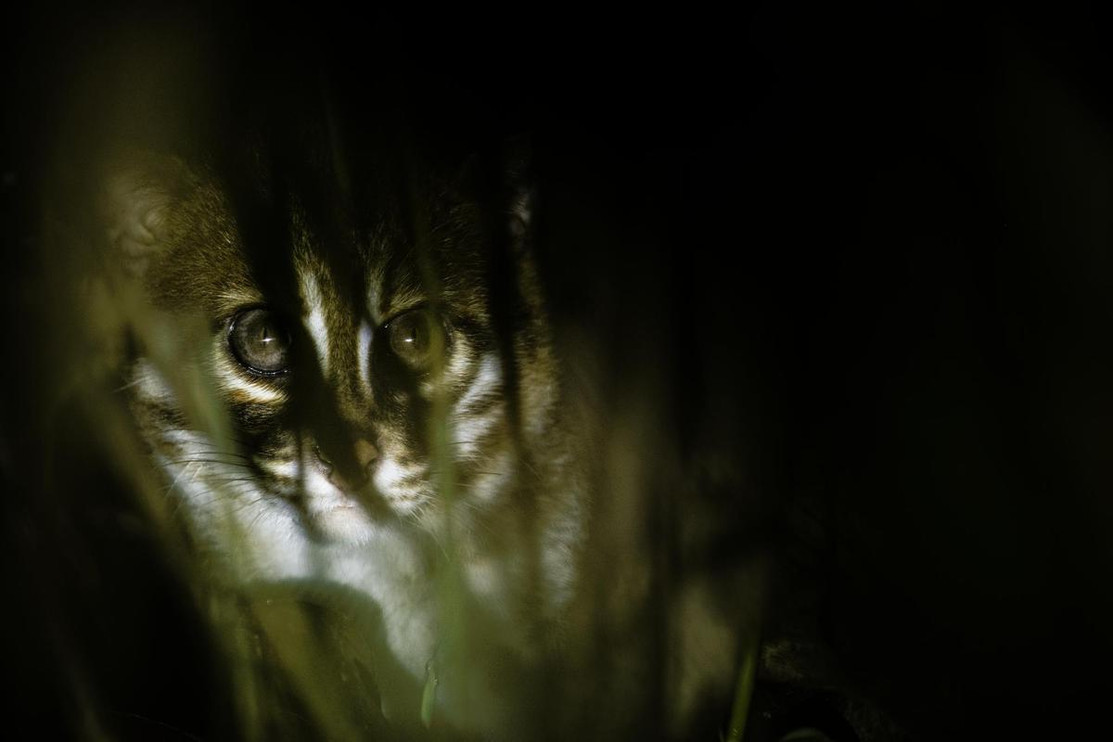 A close-up of a flat-headed cat in its natural habitat, showcasing its distinctive flat head and eyes adapted for aquatic hunting.
A close-up of a flat-headed cat in its natural habitat, showcasing its distinctive flat head and eyes adapted for aquatic hunting.
Guiña: The South American Feline Tiny Terror
The guiña, also known as the kodkod, is the only cat on our list native to the Americas. Found primarily in the temperate forests of Chile and parts of Argentina, this diminutive feline typically weighs between 2 and 3 kg (4-6 lbs). Often mistaken for Geoffroy’s cat, which shares its habitat, the guiña can be distinguished by its shorter legs and greyish-brown fur. As a skilled hunter, the guiña’s diet consists mainly of small rodents, birds, reptiles, and insects, making it an important part of its ecosystem’s food web.
Despite their adaptability, guiñas are classified as Vulnerable on the IUCN Red List. Habitat fragmentation due to road construction poses a significant threat, isolating populations and limiting their ability to thrive. Furthermore, they are often persecuted by ranchers who view them as threats to livestock, highlighting the challenges of human-wildlife coexistence.
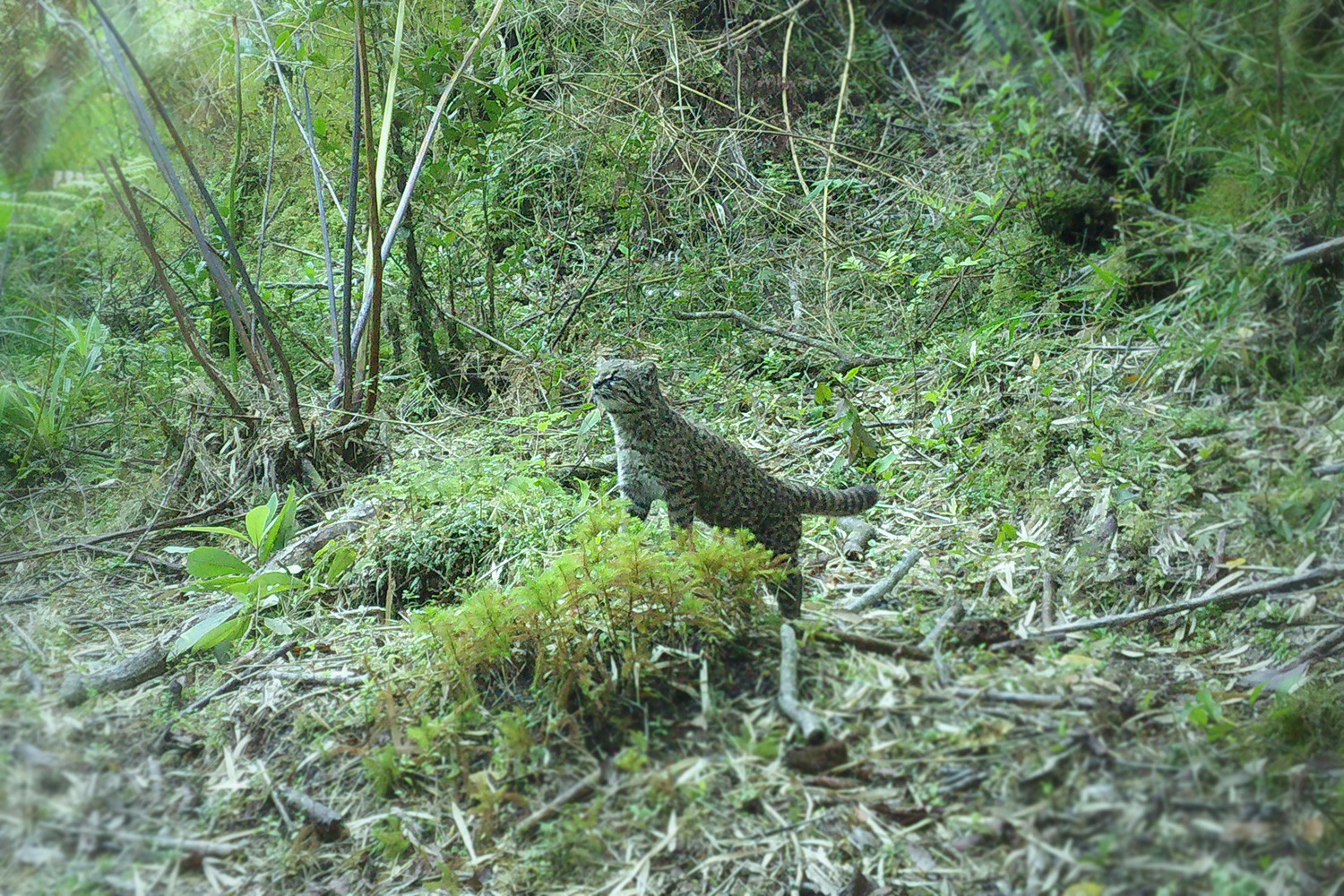 A guiña, or kodkod, pictured in a lush green environment, emphasizing its small size and adaptability to forest habitats.
A guiña, or kodkod, pictured in a lush green environment, emphasizing its small size and adaptability to forest habitats.
Flat-Headed Cat: A Wetland Specialist Among the Smallest Cats
The flat-headed cat stands out as the most endangered among these smallest cat species. Recent discoveries have highlighted just how small they can be, with adult specimens weighing as little as 1 kg, truly earning them a place among the world’s smallest felines. Generally, they weigh between 2-3 kg (4-6 lbs), similar in size to the guiña. These elusive cats inhabit the wetlands and rainforests of peninsular Malaysia, Sumatra, and Borneo, and potentially the Thailand-Malaysia border. Their physical features are uniquely adapted to their environment: a slender, elongated body, large, forward-facing eyes for excellent low-light vision, strong teeth for gripping slippery prey, and webbed feet for navigating aquatic habitats. Their diet primarily consists of fish and small reptiles, reflecting their wetland dependency.
The flat-headed cat’s rarity and elusiveness make them incredibly challenging to study. Camera trap images are scarce, hindering scientific understanding and conservation efforts. Listed as Endangered by the IUCN Red List, they face severe threats from habitat loss due to agricultural expansion, illegal pet trade, water pollution, and depletion of fish stocks. Organizations like Panthera are actively involved in their conservation, conducting camera trap surveys in Malaysian Borneo to estimate population sizes and ecological needs. They also empower local communities through training programs to patrol and monitor wildlife, building local capacity for long-term protection of this species and other threatened Bornean wild cats.
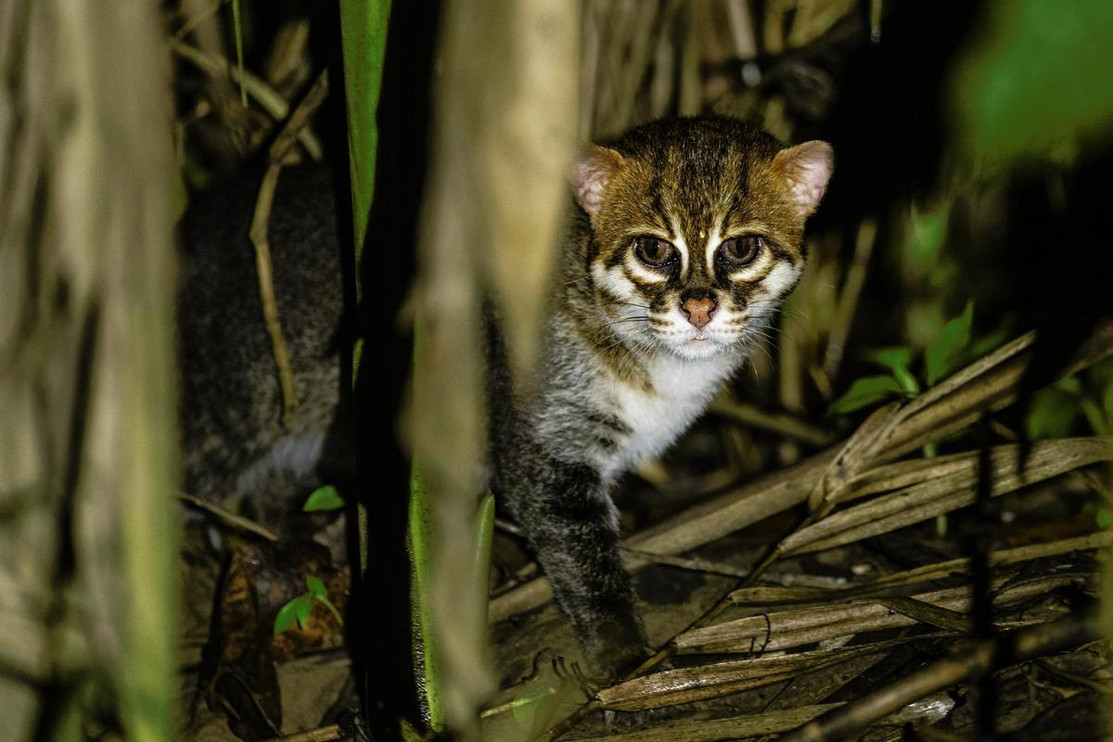 A flat-headed cat captured by a camera trap, showcasing its slender body and distinctive flat head in its rainforest habitat.
A flat-headed cat captured by a camera trap, showcasing its slender body and distinctive flat head in its rainforest habitat.
Black-Footed Cat: Pound-for-Pound, Perhaps the Deadliest Smallest Cat
Don’t let their size fool you – black-footed cats are considered the most efficient hunters in the feline world, boasting an astonishing 60% hunting success rate. This remarkable statistic surpasses even lions and tigers! Their small size, weighing only 1-2 kg (2-4 lbs), is actually an advantage in their short-grassland and karoo habitats of southern Africa (South Africa, Botswana, and Namibia). Their diminutive stature allows them to stealthily approach prey, giving them an edge over larger carnivores in the same regions.
Like the guiña, the black-footed cat primarily ambushes small birds, rodents, and reptiles. While facing threats like poisoning and habitat destruction, they are currently listed as Vulnerable, not yet Endangered, offering a glimmer of hope for their conservation.
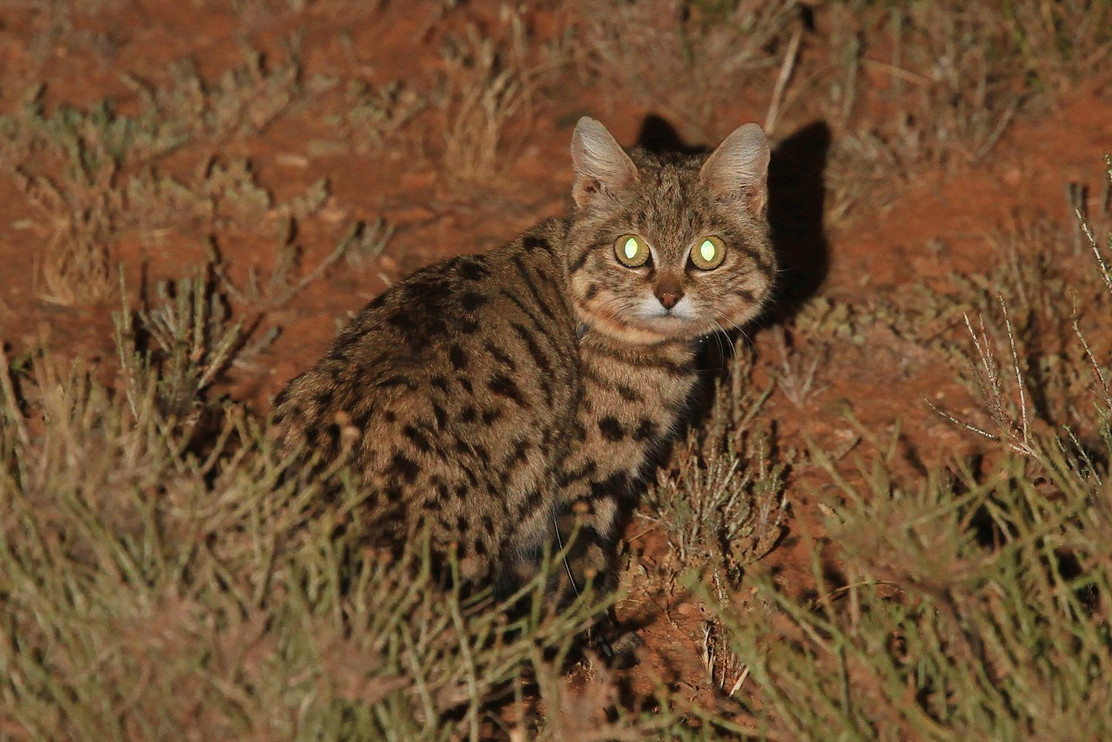 A black-footed cat expertly camouflaged in the grasslands of Africa, demonstrating its small size and spotted coat.
A black-footed cat expertly camouflaged in the grasslands of Africa, demonstrating its small size and spotted coat.
Rusty-Spotted Cat: The Tiniest of the Tiny Cats
On average, the rusty-spotted cat holds the title of the smallest cat species globally. They share a similar weight range with black-footed cats, typically weighing only 1-2 kg (2-4 lbs). Found across the Indian subcontinent in diverse habitats, rusty-spotted cats, like their smaller feline counterparts, primarily hunt small rodents and birds. Despite being the smallest, much remains unknown about their specific behaviors and ecological roles. Habitat destruction and predation by domestic dogs are significant threats, leading to their classification as Near Threatened by the IUCN.
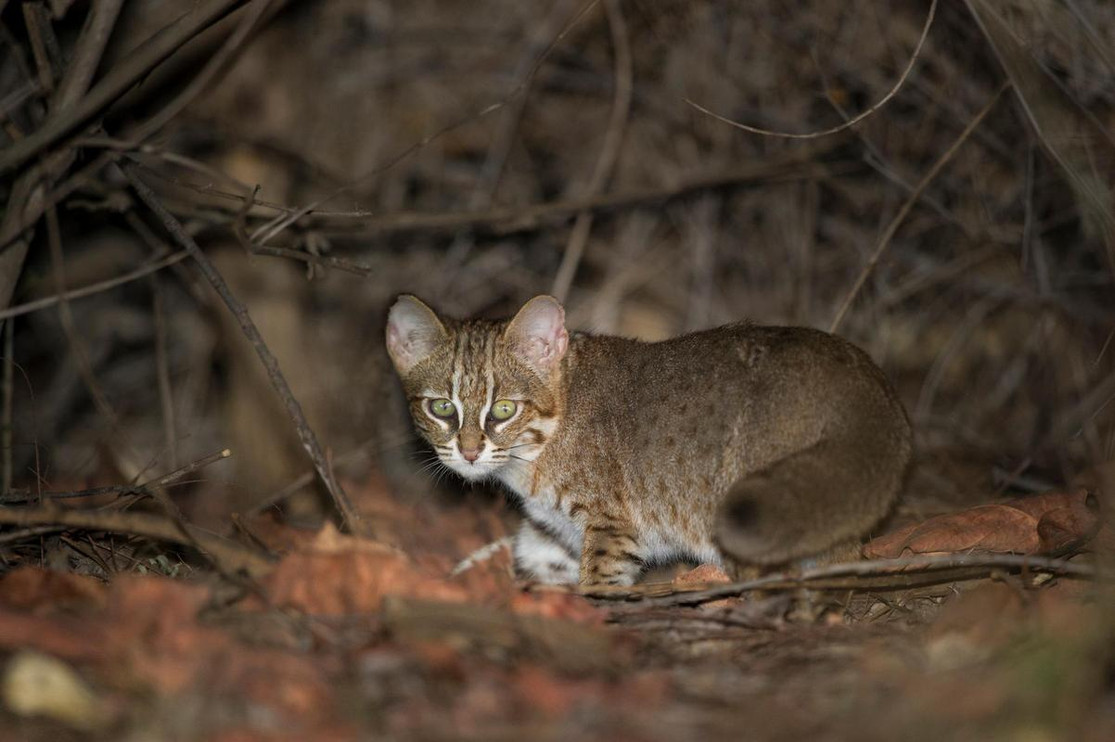 A rusty-spotted cat perched on a branch, highlighting its delicate build and rusty spots in its Asian forest environment.
A rusty-spotted cat perched on a branch, highlighting its delicate build and rusty spots in its Asian forest environment.
Protecting the Smallest Cats: Why They Matter
These smallest cat species, though often overlooked, are vital components of their respective ecosystems. They face numerous threats, primarily from human activities, emphasizing the urgent need for conservation efforts. Learning more about these fascinating creatures and supporting organizations dedicated to their protection is crucial for ensuring their survival. To delve deeper into the world of small wild cats, explore the Small Cat Spotlight collection and the updated Small Cat Program page for more information on bobcats, clouded leopards, ocelots, and other captivating small feline species.

